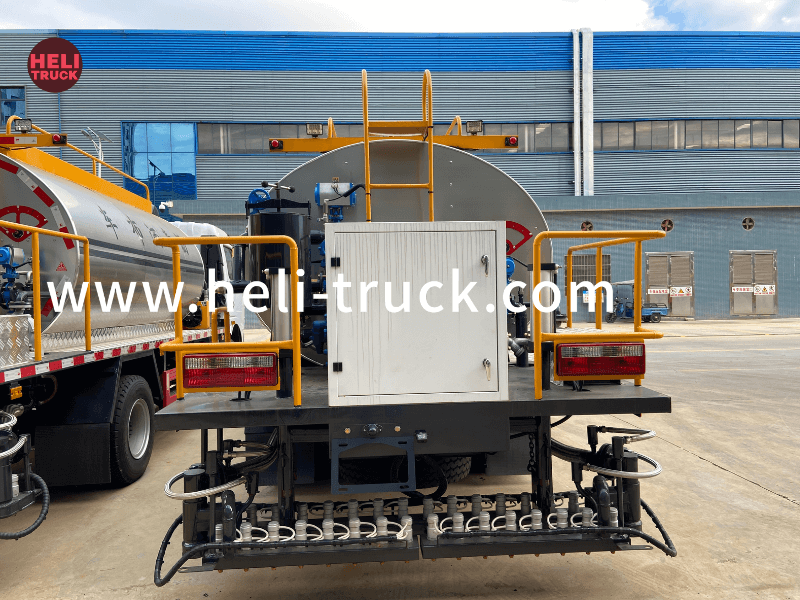Introduction:
Garbage compactor trucks play a crucial role in waste management systems around the world. These specialized vehicles are designed to collect, compress, and transport solid waste efficiently. One important aspect of garbage compactor trucks that often goes unnoticed is their weight. In this article, we will delve into the weight of garbage compactor trucks, exploring its significance, impact on operations, and how it is managed by waste management authorities.
Understanding Garbage Compactor Trucks:
Garbage compactor trucks, also known as refuse compactors or waste compactors, are specifically designed to collect and compress solid waste materials. These vehicles come in various sizes and configurations, ranging from small rear-loading compactors to large front-loading or side-loading compactor trucks used in urban areas. The primary purpose of these trucks is to reduce the volume of collected waste by compacting it, thereby maximizing the amount of waste that can be transported to disposal sites.
Types of Garbage Compactor Trucks:
There are several types of garbage compactor trucks, each designed for specific waste collection needs. The most common types include:
1. Rear-Loading Compactors: These trucks are equipped with a rear-loading hopper that allows waste collectors to manually load waste into the compactor. Once the waste is inside the compactor, it is compressed using a hydraulic mechanism, reducing its volume.
2. Front-Loading Compactors: Front-loading compactor trucks are commonly used for commercial waste collection in urban areas. These trucks feature a front-loading mechanism that allows waste bins to be emptied directly into the compactor for compression.
3. Side-Loading Compactors: Side-loading compactor trucks are typically used in residential areas where space is limited. These trucks have a side-loading mechanism that enables waste collectors to pick up and compact waste from curbside bins.
The Weight of Garbage Compactor Trucks:
The weight of a garbage compactor truck varies depending on its size, configuration, and capacity. On average, a compact rear-loading compactor truck can weigh between 15,000 to 25,000 pounds, while larger front-loading or side-loading compactor trucks can weigh up to 40,000 pounds or more. The weight of these trucks is primarily determined by the materials used in their construction, the size of the compaction unit, and the capacity of the waste storage compartment.
Significance of Garbage Compactor Truck Weight:
The weight of garbage compactor trucks plays a significant role in their operation and functionality. Here are some key aspects where the weight of these trucks is of importance:
1. Stability and Maneuverability: The weight of a garbage compactor truck affects its stability and maneuverability on the road. Heavier trucks are generally more stable but may have limitations when it comes to navigating narrow streets or tight spaces in urban areas.
2. Payload Capacity: The weight of the truck itself is important in determining its payload capacity – the maximum amount of waste it can carry. By managing Best work trucks for small businesses of the truck, waste management authorities can optimize the efficiency of waste collection and transportation operations.
3. Impact on Roads and Infrastructure: Heavy garbage compactor trucks can exert significant pressure on roads and infrastructure, potentially leading to wear and tear over time. Municipalities need to consider the weight of these trucks when planning waste collection routes to minimize damage to roads.
Managing Garbage Compactor Truck Weight:
Waste management authorities implement various strategies to manage the weight of garbage compactor trucks effectively. Some common approaches include:
1. Regular Maintenance: Proper maintenance of garbage compactor trucks is essential to ensure that they operate efficiently and safely. This includes routine inspections of the vehicle's components, such as the compaction unit, hydraulic system, and waste storage compartment.

2. Weight Distribution: Distributing the weight of the waste evenly inside the compactor helps optimize the compaction process and prevents overloading of specific areas. Waste collectors are trained to load the waste in a way that maintains balance and stability during transportation.
3. Compliance with Regulations: Waste management authorities must adhere to local regulations and standards governing the weight limits for commercial vehicles, including garbage compactor trucks. By complying with these regulations, authorities can ensure that the trucks are operated safely and within legal limits.
Conclusion:
The weight of garbage compactor trucks is a crucial factor that influences their operation, efficiency, and impact on waste management systems. By understanding the significance of truck weight, waste management authorities can implement strategies to manage it effectively and optimize waste collection and transportation processes. As these vehicles continue to play a vital role in keeping our communities clean and sustainable, it is essential to consider the weight of garbage compactor trucks in the broader context of waste management practices.
